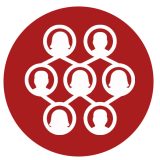Gender equality activities were scattered across the institution and took place as isolated activities led by individuals, often uninformed by academic research and evidence-based approaches. Gender equality structures needed to be developed to coordinate and oversee these activities to ensure better awareness and embeddedness of those across the university.
Creation of institutional gender equality structures: a Gender Equality Unit/Office
Problem (evidence)
Aims/objectives
To create an in-house expert focal point, called the Equality Service of Mondragon University as an advisory source to the whole university and to lead, coordinate and embed gender equality and diversity actions at university level based on evidence based, academic research approach. The aim was to have a central unit linked to departmental committees for local action, provided with annual financial and human resources.
Resources
- Small budget for the central unit
- Budget allocated to specific departments
- Workload recognition for the people that coordinate the unit and those who participate
Brief outcomes
Since the creation of the unit, different types of information requests have been received and answered:
– A student writing the report of her final project asked about the correct use of inclusive language.
– A lecturer asking for information about training session organized about sexual harassment protocols.
– 5 students contacted the unit to participate in the Gender Equality Team and make proposals about possible actions.
– Two different Spanish Scientific Journals wrote to the unit’s email with a call for papers to publish their gender equality plans.
-Unit ensured allocation of resources and coordination between different faculties
Key area
The governance bodies, key actors and decision-makers
Type of action
Creation of structures
Organization
Mondragon Unibertsitatea
Higher education institution
Action level of implementation
Departments, staff, students
Implementation
Different faculties across the university had their own gender equality teams. In some departments these were very experienced (e.g. Business School, Engineering), in others they were very recently formed and missing (Humanities and Education). Efforts from different teams and departments were united with the establishment of the Equality Service of Mondragon University. The process was led by the PLOTINA team and was supported the city council, while the Dean decided on the Equality Service composition.
The Equality Service of Mondragon University is comprised of representatives of the University and its Faculties (There is a Gender Equality Team at each faculty and then there is a University level Gender Equality Team made up of members from each Faculty’s team). Both at university and faculty level, the equality service has the following functions: promote and coordinate the University’s Equality Plan, intermediate with the various agents involved, provide information and communication about themes and resources related to the field of equality, counselling and information.
The team meets 1–2 times a month and their main duty is coordinating, monitoring and reporting on the gender equality initiatives (MU gender equality plan). The team has at their disposition a small budget allocated for delivering training activities and a specific room to hold the meetings. The team reports to the general coordination team 3–4 times a year.
The Gender Equality Service has their own e-mail and website, which features in the general university website. The website includes the Gender Equality Plan of the university, different guides for training, guides for the use of the inclusive language and non-discriminatory recruitment process, videos about sexual harassment, violence and female scientists. The website offers the option to its visitors to raise their questions via e-mail. The Communications officer of MU, who is an expert in gender equality, is in charge of responding to email requests. When needed, she consults the unit to respond to queries.
You can find out more about the service by visiting the website:
Challenges
Lack of resources in the initial years of the operation
Coping strategies
Plan ahead to include objectives and resources in the annual management plan – become part of the process of designing the annual management plan (which includes budgeting)
Tips/strategies – Lessons learnt
- Be clear what are the aims of the unit and the associated committees, who they report to and what are their responsibilities.
- Due to membership across departments, allocate initial meetings to elaborate on definitions and what is meant when we talk about gender, sex, gender equality and state of art research up to now to have everyone up to speed (a couple of gender experts will be key)
Evaluation
We will implement sending a feedback form after each question/request is addressed to find out the level of satisfaction with the service offered by the unit.
Reflection/what we would do differently
More resources should be allocated to the unit (material, space and human resources).
New students should be informed about this service during Welcome Week
Staff induction
It is still too early to evaluate
Unintended consequences
Students’ proposals were a positive result that the team did not expect.


